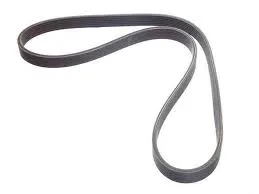- Arabic
- French
- Russian
- Spanish
- Portuguese
- Turkish
- Armenian
- English
- Albanian
- Amharic
- Azerbaijani
- Basque
- Belarusian
- Bengali
- Bosnian
- Bulgarian
- Catalan
- Cebuano
- Corsican
- Croatian
- Czech
- Danish
- Dutch
- Afrikaans
- Esperanto
- Estonian
- Finnish
- Frisian
- Galician
- Georgian
- German
- Greek
- Gujarati
- Haitian Creole
- hausa
- hawaiian
- Hebrew
- Hindi
- Miao
- Hungarian
- Icelandic
- igbo
- Indonesian
- irish
- Italian
- Japanese
- Javanese
- Kannada
- kazakh
- Khmer
- Rwandese
- Korean
- Kurdish
- Kyrgyz
- Lao
- Latin
- Latvian
- Lithuanian
- Luxembourgish
- Macedonian
- Malgashi
- Malay
- Malayalam
- Maltese
- Maori
- Marathi
- Mongolian
- Myanmar
- Nepali
- Norwegian
- Norwegian
- Occitan
- Pashto
- Persian
- Polish
- Punjabi
- Romanian
- Samoan
- Scottish Gaelic
- Serbian
- Sesotho
- Shona
- Sindhi
- Sinhala
- Slovak
- Slovenian
- Somali
- Sundanese
- Swahili
- Swedish
- Tagalog
- Tajik
- Tamil
- Tatar
- Telugu
- Thai
- Turkmen
- Ukrainian
- Urdu
- Uighur
- Uzbek
- Vietnamese
- Welsh
- Bantu
- Yiddish
- Yoruba
- Zulu
Jul . 27, 2024 17:55 Back to list
Understanding the Importance of Timing Belts in Sewing Machine Performance and Maintenance
Understanding Sewing Machine Timing Belts Importance and Maintenance
When it comes to sewing machines, one of the critical components that ensure smooth and consistent operation is the timing belt. The timing belt is a crucial element that synchronizes the movement of various parts within the machine, allowing for precision stitching and overall functionality. This article will delve into the importance of the sewing machine timing belt, how it operates, and tips for maintenance.
The Role of the Timing Belt
The timing belt connects the machine's motor to its needle and presser foot mechanism. Essentially, it ensures that the needle moves up and down at the correct timing relative to the movement of the feed dogs and other parts of the sewing machine. This synchronization is vital for creating even stitches, preventing fabric from getting jammed, and ensuring that the machine runs smoothly. A well-functioning timing belt can significantly enhance the quality of sewing projects and prolong the life of the machine.
Signs of a Failing Timing Belt
As with any mechanical component, timing belts can wear down over time due to constant use and exposure to various environmental factors. There are several signs that may indicate a failing timing belt. If you notice that your sewing machine is producing uneven stitches, making unusual noises, or the needle is not moving as it should, it might be time to check the timing belt. In some cases, you may even observe visible damage, such as fraying or splitting of the belt.
Ignoring these signs can lead to more severe issues, including significant damage to other components of the machine, which may require costly repairs. Therefore, it is essential to address any issues as soon as they arise.
Maintenance Tips
sewing machine timing belt

To keep your sewing machine running smoothly, regular maintenance of the timing belt is essential. Here are some tips to help you maintain your sewing machine's timing belt
1. Regular Inspection Check the timing belt regularly for any signs of wear and tear. Look for fraying, cracks, or signs of stretching, which could indicate that it needs replacement.
2. Keep it Clean Dust and lint can accumulate around the timing belt, causing potential issues. Ensure that you regularly clean your sewing machine, focusing on areas around the timing belt and its mechanisms.
3. Proper Tension The timing belt needs to have the right tension to function correctly. If it is too loose, it may slip; if too tight, it could break or cause additional strain on the motor. Consulting your sewing machine's manual can provide guidance on the proper tension settings.
4. Professional Servicing While some sewing machine maintenance can be done at home, scheduling regular servicing with a professional is advisable for complex issues, including timing belt replacement. Professionals have the expertise to address these issues without risking further damage.
Conclusion
In summary, the timing belt is a vital component of any sewing machine, significantly impacting its performance and longevity. Understanding its role, recognizing the signs of failure, and practicing regular maintenance can help keep your sewing machine in optimal working condition. By taking these proactive steps, you can ensure that your sewing experience remains enjoyable and efficient for years to come. Whether you are a novice or an experienced sewist, taking care of your sewing machine's timing belt is an investment in quality craftsmanship and durability.
-
Korean Auto Parts Timing Belt 24312-37500 For Hyundai/Kia
NewsMar.07,2025
-
7PK2300 90916-T2024 RIBBED BELT POLY V BELT PK BELT
NewsMar.07,2025
-
Chinese Auto Belt Factory 310-2M-22 For BMW/Mercedes-Benz
NewsMar.07,2025
-
Chinese Auto Belt Factory 310-2M-22 For BMW/Mercedes-Benz
NewsMar.07,2025
-
90916-02660 PK Belt 6PK1680 For Toyota
NewsMar.07,2025
-
drive belt serpentine belt
NewsMar.07,2025

